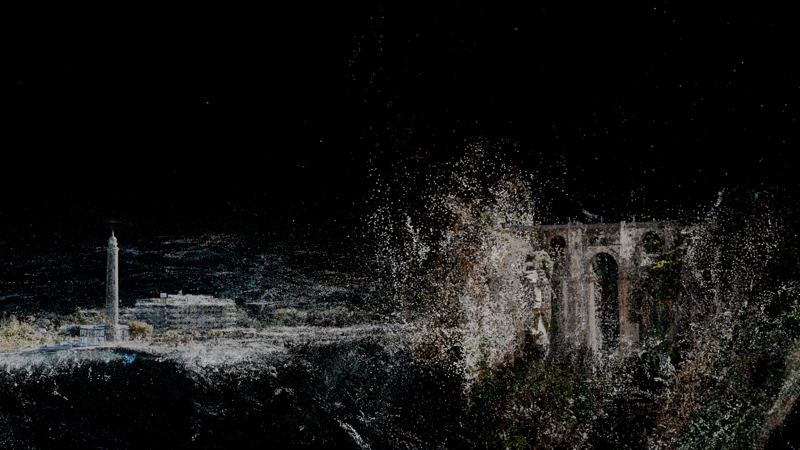An Introduction to 3D Gaussian Splatting Fundamentals
A comprehensive introduction to the mathematical foundations and core concepts behind 3D Gaussian Splatting technology.


3D Gaussian Splatting (3DGS) represents a paradigm shift in how we approach real-time rendering of photorealistic 3D scenes. This article explores the mathematical foundations and core concepts that make this technology so powerful.
What Makes 3DGS Different?
The idea of 3DGS is actually not new, though it has gained in popularity in the last 2 years.
Key Advantages
- Real-time Performance: Renders at interactive frame rates
- Photorealistic Quality: Maintains high visual fidelity
- View-dependent Effects: Naturally handles reflections and lighting
- Efficient Storage: Compact representation of complex scenes
Mathematical Foundation
3D Gaussian Functions
At its core, each Gaussian splat is defined by:
Where:
- \(\boldsymbol{\mu}\) is the 3D position (mean)
- \(\boldsymbol{\Sigma}\) is the 3×3 covariance matrix
- \(\mathbf{x}\) is any point in 3D space
Covariance Matrix Decomposition
The covariance matrix \(\boldsymbol{\Sigma}\) is decomposed into:
Where:
- \(\mathbf{R}\) is a rotation matrix (3×3)
- \(\mathbf{S}\) is a scaling matrix (3×3 diagonal)
This decomposition allows independent control over:
- Position (\(\boldsymbol{\mu}\)): Where the Gaussian is located
- Rotation (\(\mathbf{R}\)): How it’s oriented in space
- Scale (\(\mathbf{S}\)): Its size along each axis
Spherical Harmonics
Color information is encoded using spherical harmonics (SH), allowing view-dependent appearance:
Where:
- \(\mathbf{d}\) is the viewing direction
- \(c_l^m\) are the SH coefficients
- \(Y_l^m\) are the spherical harmonic basis functions
Rendering Pipeline
1. Projection to 2D
Each 3D Gaussian is projected to screen space using the camera parameters:
Where:
- \(\mathbf{J}\) is the Jacobian of the projection
- \(\mathbf{W}\) is the world-to-camera transformation
2. Alpha Blending
Gaussians are sorted by depth and blended using:
Where:
- \(c_i\) is the color of Gaussian i
- \(\alpha_i\) is its alpha value
- The product term handles occlusion
3. Optimization
The system is trained end-to-end using gradient descent on:
Where:
- \(\mathcal{L}_{\text{color}}\) is the L1 color loss
- \(\mathcal{L}_{\text{ssim}}\) is the structural similarity loss
- \(\lambda_{\text{ssim}}\) balances the two terms
Implementation Considerations
Memory Management
Each Gaussian requires storage for:
- Position: 3 floats (12 bytes)
- Rotation: 4 floats (16 bytes, quaternion)
- Scale: 3 floats (12 bytes)
- Opacity: 1 float (4 bytes)
- SH coefficients: 48 floats (192 bytes, degree 3)
Total: ~236 bytes per Gaussian
GPU Optimization
Efficient rendering requires:
- Tile-based rendering: Divide screen into tiles
- Frustum culling: Skip invisible Gaussians
- Level-of-detail: Reduce complexity at distance
- Memory coalescing: Optimize GPU memory access
Practical Applications
Scene Reconstruction
3DGS excels at reconstructing scenes from:
- Multi-view photographs
- Video sequences
- LIDAR point clouds
- Photogrammetry data
Real-time Rendering
Applications include:
- Virtual Reality: Immersive environments
- Gaming: Photorealistic backgrounds
- Architecture: Walkthrough visualizations
- Film: Digital set extensions
Limitations and Challenges
Current Limitations
- Dynamic scenes: Limited support for moving objects
- Transparency: Complex transparent materials are challenging
- Editing: Difficult to modify reconstructed scenes
- Storage: Large datasets require significant memory
Active Research Areas
- Temporal consistency: Handling video sequences
- Semantic understanding: Object-level editing
- Compression: Reducing storage requirements
- Hybrid approaches: Combining with traditional rendering
Getting Started with 3DGS
Tools and Software
- Original Implementation: 3D Gaussian Splatting
- SkySplat Blender: Our Blender integration
- Viewers: Web-based and standalone viewers
- Conversion Tools: Format converters and utilities
Learning Resources
- Official Paper
- Video Tutorials
- Community Examples
- Research Papers
Conclusion
3D Gaussian Splatting represents a fundamental shift in 3D rendering technology. By understanding its mathematical foundations and implementation details, developers and artists can better leverage this powerful technique for their projects.
The combination of real-time performance and photorealistic quality makes 3DGS particularly exciting for interactive applications, while its efficient representation opens new possibilities for content creation and distribution.
As the technology continues to evolve, we can expect to see even more innovative applications and improvements in the coming years.
Want to dive deeper? Try the SkySplat Blender addon to start experimenting with 3DGS today.